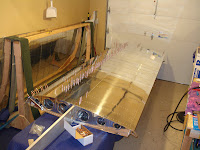




Beginning on page 20-02, read and re-read directions to avoid mistakes. My 1st surprise was the softness of the CCR-264SS-3-2 rivets. Seems to be brass and when applying them with the rivet gun, there is a soft "clunk" and not the hard "thunk" I'm accustomed to with the alum. rivets.
Installing the retainer blocks went well. Again, needed to decypher the plans to determine which bolt was which, because several different sizes come in the bag. One can measure the bolts to identify (which I did not) or one can identify the bolts through a process of elimination. This worked but concerns me that it will eventually result in a mistake. I need to learn the sizing system to be able to identify parts through measurement.
Everything went well, including the match-drilling of the aft bulkhead to the center section. Some slight elongation of a hole here or there, but not much. My biggest challenge was to maintain a 90 degree angle of the bit to the work. After I finished up the riveting part of this assembly, I discovered that even with my attention to detail, the holes still were not at 90 degree angles, but it did work out.
On the machine countersink work, I was careful to set the tool to the right depth and tested on scrap material before moving to the center section. This worked well.
Some errors in the directions on page 20-04. On step 2, the plans refer to diagram #1, and I think they mean diagram #2. There have been other small things like this, but if you take your time and read several times, you will figure it out. I'm about half way through step 2 on this page and will try to finish tomorrow.





















































